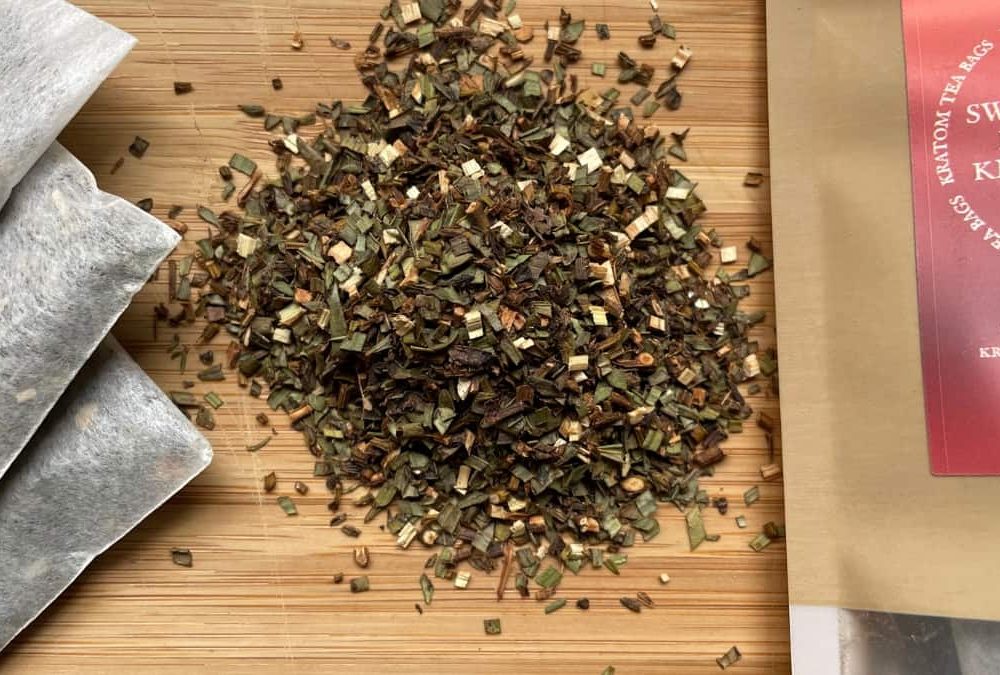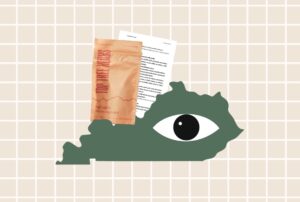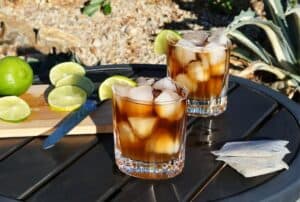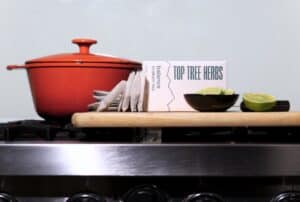Simplicity is beautiful. Carefully selected and refined, with nothing extra. Many of our herbal blends are cacophonies of herbs, intricately woven to create the perfect functional tea. However, we’ve taken a different approach with this kratom herbal tea blend. Simple honeybush tea and Red Dragon kratom combine to make a tasty, easygoing, and comforting tea. We call it Sweet Dragon.
This tea is for all of you who prefer a sweeter cup of kratom tea, but are always fretting over how much sweetener you can use without feeling guilty. We get it, we’ve all been there, especially when we first started drinking kratom tea.
Eventually we grew to love the distinct, earthy, bitter taste of kratom tea. However, this blend will satisfy even those with the most insatiable sweet tooth.
Sweet Dragon Flavor Profile
Sweet Dragon honeybush kratom tea tastes like kratom tea with honey. It resembles green tea, but without any of the excessively bitter flavor. While our green honeybush tea doesn’t contain honeybush flower petals, it still has a distinct floral taste.
The honeybush tea pairs excellently with kratom. It takes away that initial bitterness that plain kratom tea delivers. It adds a lightness to the brew, but that doesn’t mean it’s a mild tea. It has a lot of flavor.
The Sweet Dragon blend is certainly more refreshing than a regular mug of kratom tea. If you sweeten your kratom tea, you probably won’t as much sweetener as you usually do to get a classic sweet tea flavor.
What is Honeybush Tea
Honeybush is closely related to rooibos, but tends to have a sweeter, more mellow taste. If you look at the leaves, they are a little bit darker and chunkier than rooibos.
Honeybush is in the Cyclopia genus, and the term honeybush is actually used to describe upwards of five different species.
Honeybush grows along the coast of the Cape in South Africa. It has a fairly limited range, as it prefers sour and nitrogen-depleted soil. The honeybush has evolved with the expectation of frequent fires. It develops a large root system so as to be able to regenerate after losing its above-group vegetation.
It’s this adaptive trait which allows it to be harvested by simply cutting it at the base. From harvest, it can take two or three years before it regenerates and is able to be harvested again. As a result, honeybush cultivators are only able to reap a third of their crops each year.
Honeybush is a traditional beverage among the people that have inhabited the cape for centuries. In rural areas, it is common practice to keep a perpetual pot of honeybush tea on the kettle to be at the ready for any thirsty visitors.
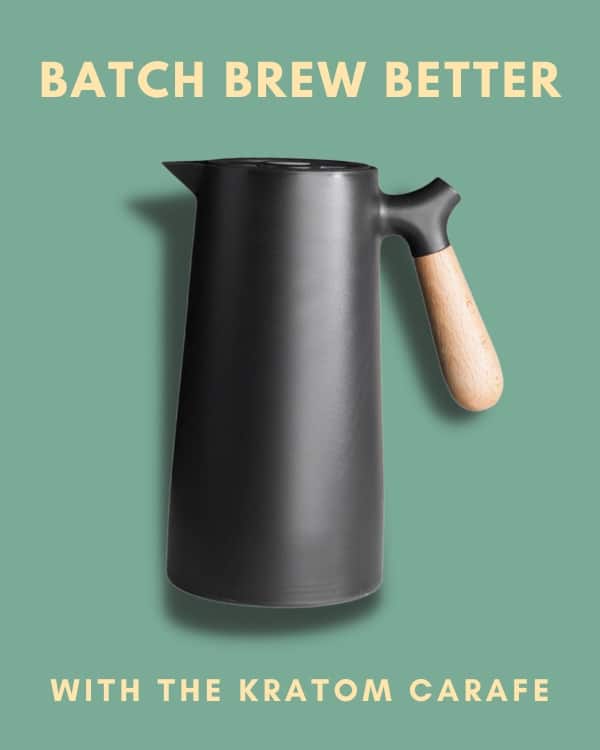
Honeybush Tea Origin
Honeybush tea is cultivated on farms in the small region of South Africa that it grows in. Most of the cultivators are in close proximity to each other. This has given them the unique opportunity to create industry wide standards that are employed by most honeybush farmers and exporters.
While some honeybush is still wild-harvested, most honeybush is cultivated. The cultivated fields are not typical monocrops, however. Native flora is encouraged to grow along with honeybush plants to create the most sustainable harvest while also increasing yields. Furthermore, it’s organically grown. This is actually common, because non-organic fertilizer was cost prohibitive in the early years of honeybush production.
The first honeybush product was marketed in South Africa in the 1960s. However, it wasn’t until rooibos marketers took interest in honeybush in the 1990s that it became a global commodity.
Green Honeybush Tea Health Benefits
Since honeybush is caffeine free and low in tannins, it can be steeped for as long as you like, even at boiling temperatures, without developing a bitter taste.
The brew is a beautiful, rich, nutty red color. It’s a little bit darker than rooibos tea, and a little bit more mellow in color and flavor. It has a sweet flavor, with notes of wildflowers and dark berries.
Honeybush contains several polyphenol compounds, which are noted to be strong antioxidants. One of the most well studied compounds in honeybush is mangiferin, which is well known for its pharmacological effects.
However, research quickly discovered that most of the mangiferin was destroyed in the fermentation process. To combat the loss of the mangiferin, green honeybush tea was developed. (This is what we include in our Sweet Dragon kratom herbal tea blend.)
Green honeybush tea is made by drying the freshly picked honeybush in vacuums, so that the destructive oxidation process was limited. Last but not least, honeybush is naturally sweet without any sugar! Enjoy a healthy, yet super sweet, tea without any guilt (or cavities)!
Kratom Tea Overview
Top Tree Herbs was founded in 2019 with the explicit purpose of normalizing kratom tea. In other words, we want people to understand kratom as well as they understand coffee or black tea, and to remove the stigma that’s often associated with it.
Previously, the millions of Americans who consumed kratom every day were having kratom powder, not kratom tea. That means they were ingesting the plant material instead of just the extracted alkaloids, which isn’t common in the traditional context. The traditional preparation of kratom in Southeast Asia has been to brew whole, fresh leaves into a tea. Eating kratom powder instead of drinking kratom tea is like eating coffee grounds instead of drinking coffee.
Kratom is an evergreen tree which is native to Southeast Asia. The leaves have been consumed for their desirable properties for thousands of years. At lower serving sizes, kratom tea is energizing. However, when a larger serving size is consumed, the effects are different. It’s a great beverage for relaxing and socializing – it can bring calm feelings and soothe a restless mind.
One of the reasons why kratom tea never really kicked off in the United States was because it was difficult to get kratom leaves instead of powder, and people didn’t know how to brew it. Traditionally, kratom tea leaves are simmered over a fire for three hours before the tea is ready. Most Americans would gawk at the idea of spending three hours brewing tea each day. Tea in the U.S. is typically made one cup at a time, not in large batches for entire communities. However, kratom tea most certainly does not have to take this long to make. With a little research, we’ve developed a brewing method that cuts the steep time down to just 20 minutes!
Honeybush, with its lower tannin levels, pairs perfectly with it because it can withstand the longer brew time.
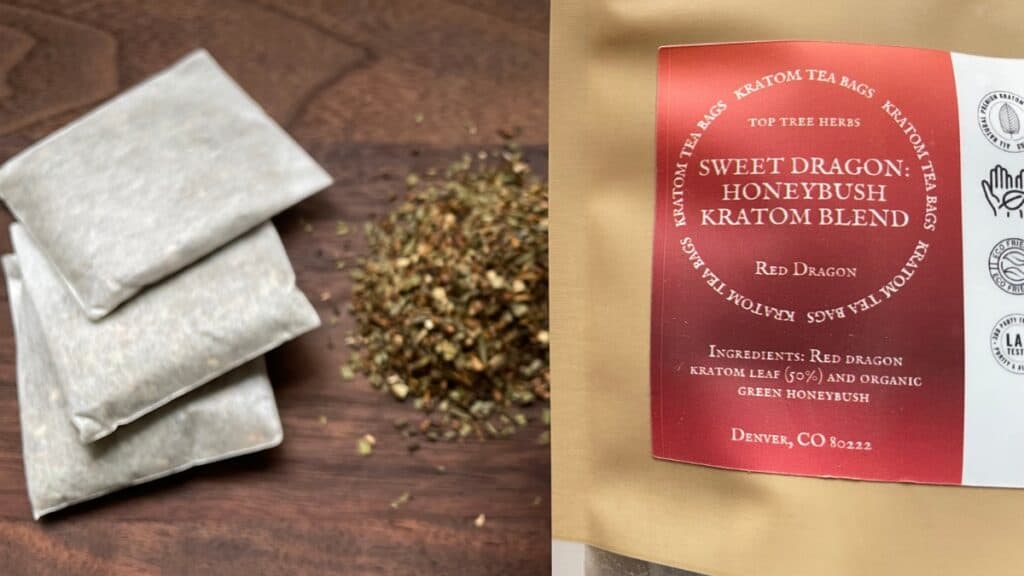
Honeybush Tea and Red Dragon Kratom
We’ve paired honeybush tea with red dragon kratom to create an excellent, relaxing tea. Since honeybush tea doesn’t have caffeine, you can drink it later in the day without causing sleep problems. Red Dragon kratom is one of our favorite red vein strains. Red veins are typically said to be less energizing, but have more uplifting qualities. Sweet Dragon is the perfect tea to share with visiting friends and neighbors.
Give it a try!
Want to try honeybush tea? Just head on over to the tea shop to get some for yourself. Plus, check out our other red vein kratom herbal blends, from a relaxing chai spice tea to our ginger & turmeric blend.
We hope you enjoy Sweet Dragon as much as we do. Until next time, cheers to better brewing!
